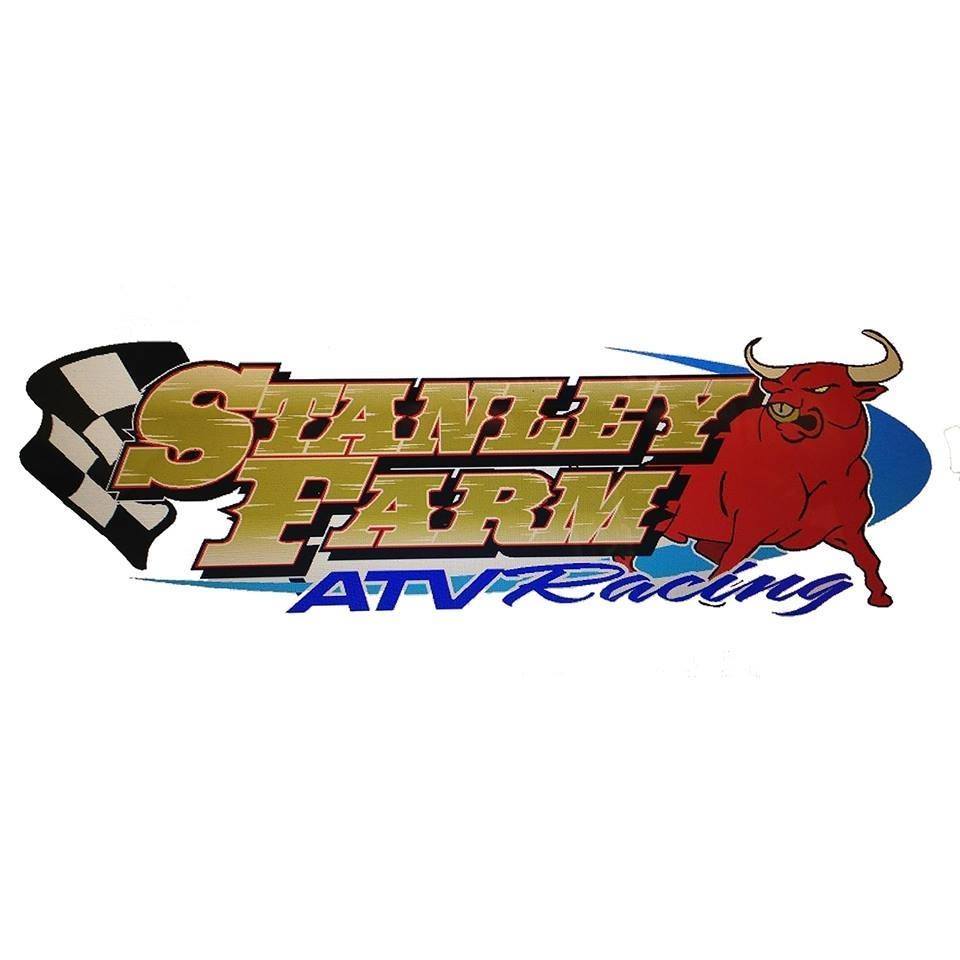Introduction to Farm ATV Chain Lubrication
If you own a farm ATV, you know that the chain is its lifeline—transferring power, propelling you across muddy fields and rocky trails. To keep that chain humming, choosing the right lubricant for farm ATV chains isn’t optional, it’s mandatory. Without proper lubrication, chains wear out faster, rust creeps in, and your trusty farm companion can leave you stranded mid‑shift. Luckily, we’ve scoured the market and the sheds to bring you the 6 best lubricants that will keep your chains smooth, strong, and long‑lasting.
Why Proper Chain Lubrication Matters for Farm ATV Chains
Reducing Wear and Tear on Chains
Think of your chain as your ATV’s spine. Every ride, it flexes and bends, creating friction. A high‑quality lubricant for farm ATV chains forms a protective film, cutting down on metal‑to‑metal contact. The result? Less wear, fewer chain replacements, and more money in your pocket over time.
Preventing Rust and Corrosion
Farm work often means dealing with water, manure, and chemicals. Those elements can corrode metal faster than a rainstorm washes away footprints. A good farm ATV chain lubricant repels moisture and blocks corrosive agents, keeping rust and oxidation at bay. And trust me, a well‑lubricated chain is far easier to clean in your weekly maintenance and repairs routine.
Understanding Farm ATV Chain Types
Standard vs. Sealed Farm ATV Chains
Before you pick a lubricant, know your chain. Standard chains have open rollers that trap dirt and require more frequent lubrication. Sealed chains (same concept as O‑rings in motorcycle chains) keep contaminants out, needing less maintenance but demanding compatible lubes.
Benefits of Sealed Chains
- Longer Life Span: Sealed chains last up to 30% longer.
- Less Frequent Lubrication: Ideal if you juggle multiple tasks.
- Cleaner Operation: Fewer grime‑buildups means fewer washdowns.
Chain Sizes and Specifications
Farm ATV chains come in sizes like 520 or 525, matching specific ATV models and horsepower. Always check your owner’s manual or the chain stamp to ensure you pick a lubricant that penetrates correctly across roller diameters.
Key Factors to Consider When Choosing a Lubricant
Viscosity and Temperature Range
ATV work spans dawn chill to midday heat. Look for a lubricant formulated for wide temperature swings—usually marked “‑20°F to 400°F.” Too thin, and it drips off; too thick, and it attracts dust.
Dirt and Water Resistance
Farming brings mud, manure, and standing water. A top‑tier farm ATV chain lubricant includes additives that repel water and prevent slurry from sticking.
Eco‑Friendly and Biodegradable Options
If eco‑farming is your jam, choose a biodegradable, low‑toxicity lube from the eco‑farming tag or green tech category. They protect your soils and waterways while keeping chains in tip‑top shape.

Lubricant #1: Wet Lubricants for Farm ATV Chains
Best for Muddy and Wet Conditions
Wet lubes stay put when you’re slogging through marshy fields or washing your farm equipment. Their sticky formulation clings to rollers, ensuring you don’t have to reapply after every splash.
Application Tips for Wet Lubricants
- Clean First: Remove old grease with a chain cleaner from our how‑to guides.
- Spray Evenly: Cover rollers, links, and plates.
- Let It Set: Give it 10 minutes to penetrate before a test ride.
Lubricant #2: Dry Lubricants for Farm ATV Chains
Best for Dry, Dusty Environments
If your farm ATV doubles as a back‑road cruiser in dusty paddocks, dry lubricants are your best friend. They go on wet but leave behind a Teflon‑like coating that sheds dust instead of gumming up.
Reapplication Frequency
Dry lubes need more frequent touch‑ups—about every 50–75 miles or after each dusty ride. But the cleaner chain often means longer chain life in arid conditions.
Lubricant #3: Wax‑Based Lubricants for Farm ATV Chains
Benefits and Drawbacks
Wax lubes combine the best of wet and dry worlds: they repel water and shed dirt once the solvent carrier evaporates. On the flip side, they can be messy to apply and require a clean chain for best adhesion.
Suitable Riding Conditions
Wax lubricants excel in mixed environments where you encounter both mud and dust. For budget‑friendly ATVs or affordable ATVs, they’re an ideal mid‑range choice.
Lubricant #4: Ceramic‑Enhanced Lubricants for Farm ATV Chains
How Ceramic Additives Improve Performance
Ceramic particles act like ball bearings between metal rollers, cutting friction dramatically. Chains treated with ceramic‑enhanced lubricants last longer and run smoother—ideal if you haul heavy loads or use heavy-duty ATVs for barn chores.
Ideal Use Cases
- High‑Torque Applications: Hauling feed or equipment.
- Extended Rides: When you’re logging long hours in the fields.
- Heat‑Intensive Tasks: Plowing, towing, or steep terrain.
Lubricant #5: Bio‑Based Lubricants for Farm ATV Chains
Eco‑Farming Friendly Choices
Made from renewable plant oils, bio‑based lubes tick all the eco‑boxes. They often come with anti‑washout additives for water resistance and meet organic farm standards.
Biodegradability and Environmental Impact
These lubricants degrade naturally, reducing soil contamination. Pair with electric ATVs for a truly green farm setup!
Lubricant #6: Graphite‑Based Lubricants for Farm ATV Chains
High‑Temperature Stability
Graphite lubricants handle heat like champs, making them perfect for prolonged engine idling or high‑RPM use. They leave a dry film that resists dirt and resists temperature up to 600°F.
Anti‑Corrosion Properties
Graphite’s layered structure repels moisture and inhibits oxidation—great for chains stored outdoors or in humid barns.
How to Apply Lubricant to Farm ATV Chains: A Step‑by‑Step Guide
Cleaning the Chain Thoroughly
- Degrease: Use a safe chain cleaner (check our ATV accessories for recommended products).
- Scrub: Gently brush each roller and link.
- Rinse & Dry: Remove all residue before lubing.
Applying the Lubricant Correctly
- Rotate the Wheel: Slowly spin to expose all chain sections.
- Spray or Brush: Apply evenly, aiming for the inside of the chain where the rollers meet sprockets.
- Wipe Off Excess: Prevents fling‑off and attracts less dirt.
Checking Chain Tension After Lubrication
Proper tension prevents skipping and sprocket damage. Refer to your owner’s manual or our maintenance log for adjustment specs.
Maintenance Tips to Extend Farm ATV Chain Life
Keeping a Maintenance Log
Document every lubrication session, cleaning date, and chain inspection in a physical log or digital file. This habit ensures you never miss a service interval.
Inspecting for Wear and Damage
Check for:
- Elongation: Chains stretch over time—replace if wear exceeds 1–2% of length.
- Rust Spots: Promptly remove and re‑lubricate.
- Loose or Damaged Rollers: Replace individual links or the entire chain if needed.
Documenting in Your Maintenance Log
Record: date, lubricant type, mileage/hours, and any observations. Over time, you’ll see patterns—maybe your wet lube washes off too quickly, or your wax lube needs monthly touch‑ups.
Conclusion
Selecting the right lubricant for farm ATV chains isn’t just a detail—it’s the difference between a chain that lasts a season and one that endures years of hard farm work. From wet lubes that cling through mud to eco‑friendly bio‑lubricants that protect your soils, there’s a perfect match for every farming scenario. Keep your chain clean, choose your lube wisely, and document every service in your maintenance log to maximize performance and minimize downtime.
For more expert tips on ATV safety, off‑road farming techniques, and farm ATV attachments, explore our full range at the Farm ATV website.
FAQs
1. How often should I lubricate my farm ATV chain?
Aim for every 100 miles or after each wash—or more frequently in extreme mud or dust.
2. Can I mix lubricant types on the same chain?
It’s best to stick to one type until you’ve fully cleaned off the previous lube to avoid additive conflicts.
3. Is a biodegradable lubricant as effective as a petroleum‑based one?
Modern bio‑based lubes often match or exceed pet‑based performance, with the bonus of environmental safety.
4. How do I know when my ATV chain needs replacing?
If the chain elongates beyond spec (1–2% stretch), skips under load, or shows significant rust, it’s time to replace.
5. Should I use the same lubricant year‑round?
You can, but switching between dry lubes for dusty seasons and wet lubes for rainy months optimizes protection.
6. What’s the difference between wax and dry lubricants?
Wax lubes leave a protective solid film that sheds dirt; dry lubes leave a Teflon‑like coating and repel dust.
7. Where can I find more ATV maintenance guides?
Check out our detailed how‑to guides for step‑by‑step instructions on chain care, oil changes, and more.


